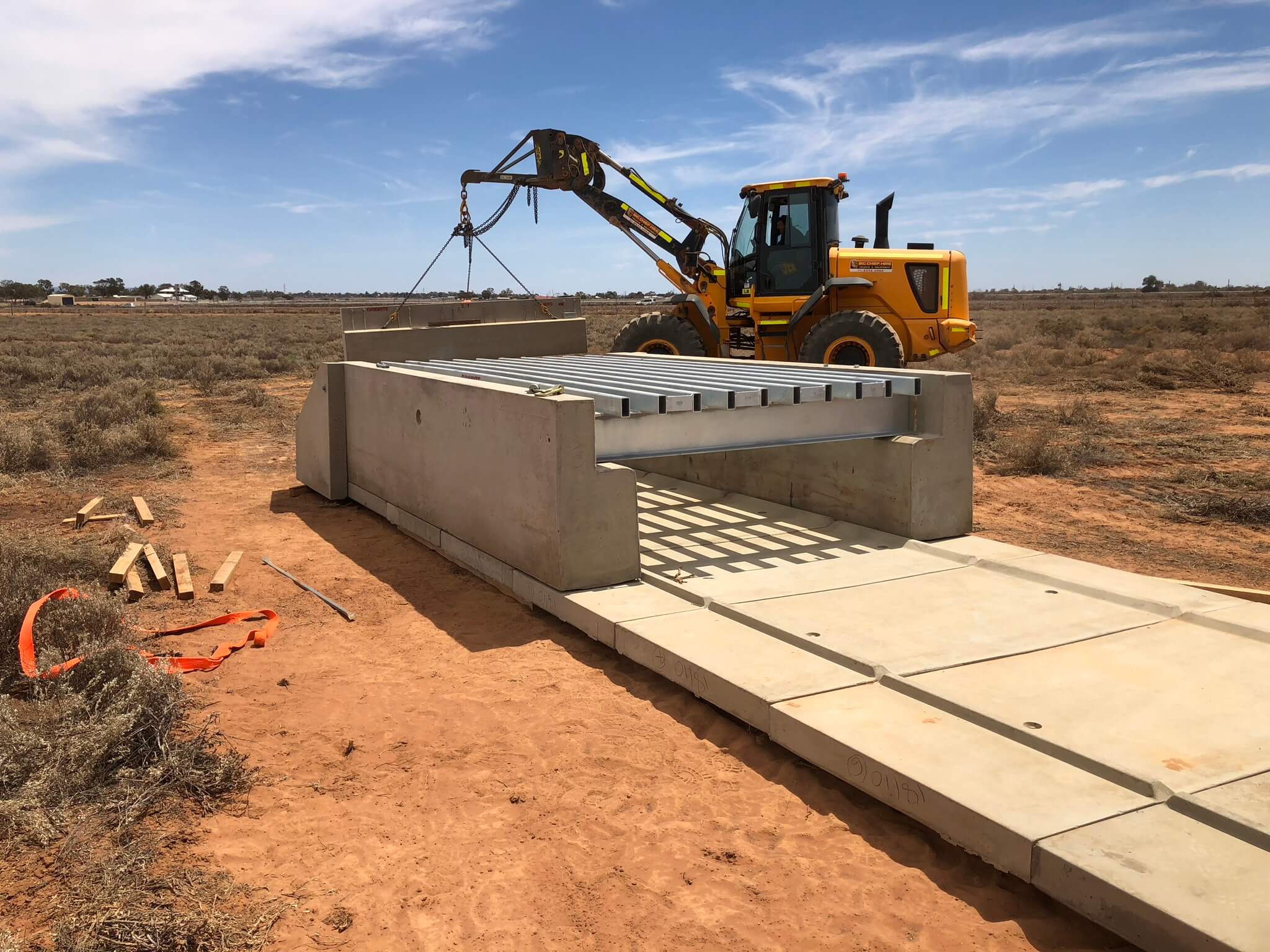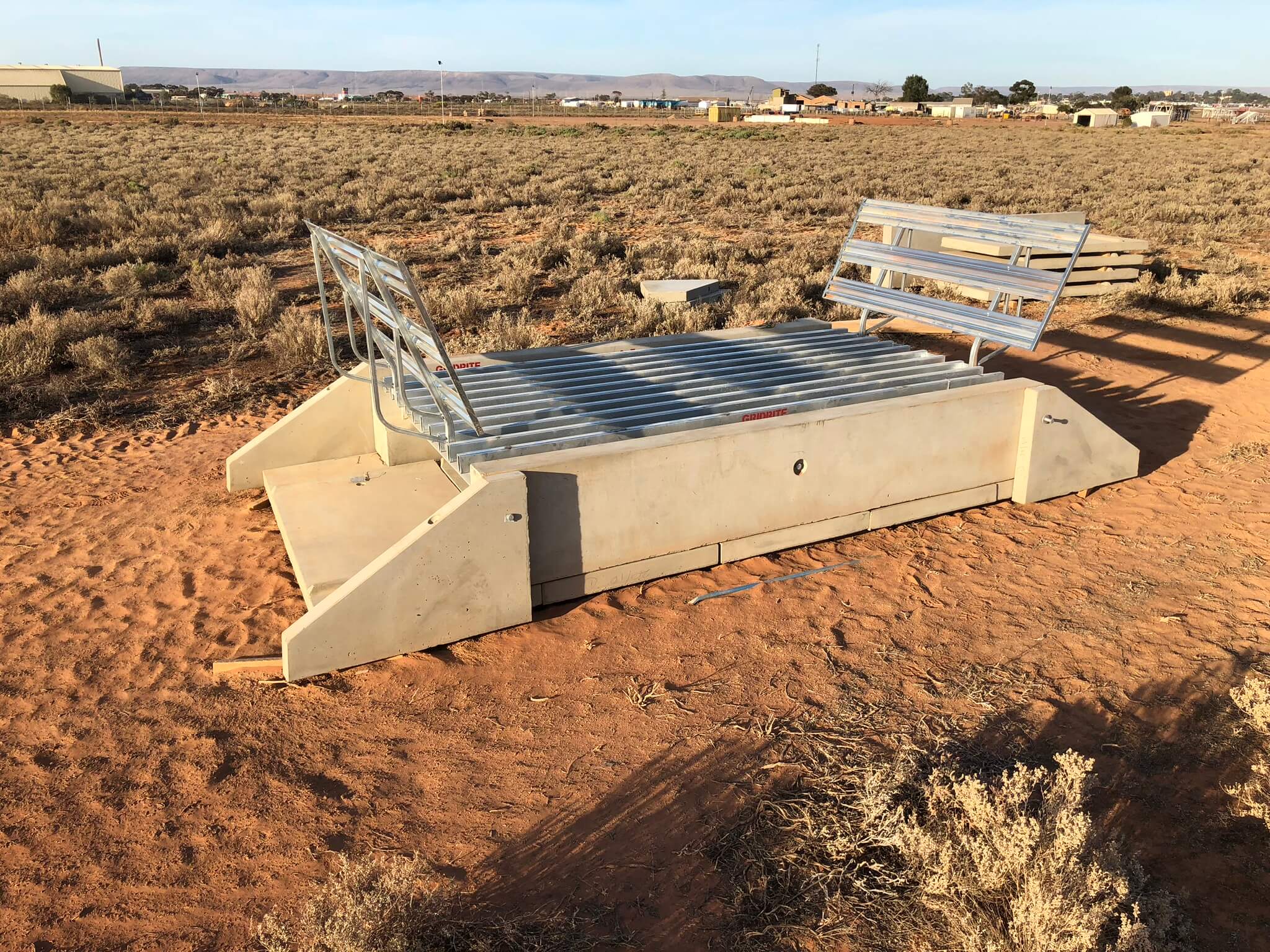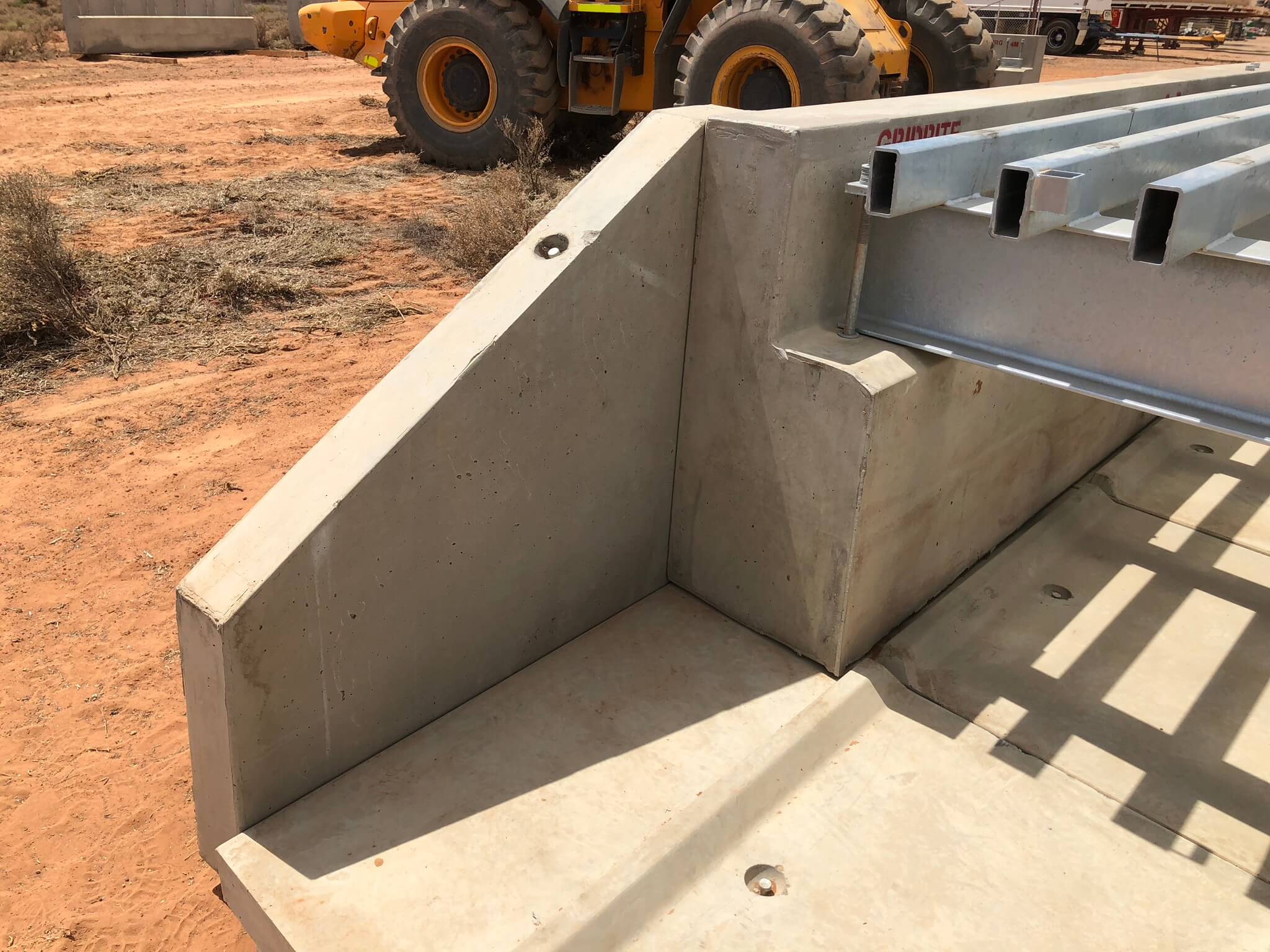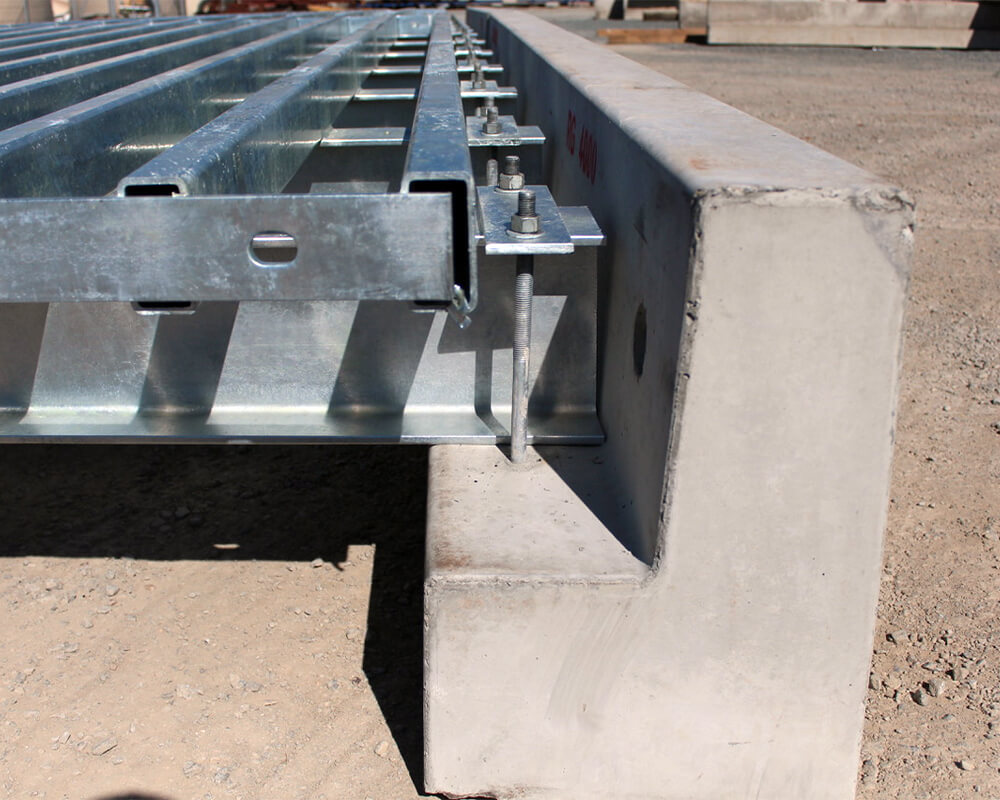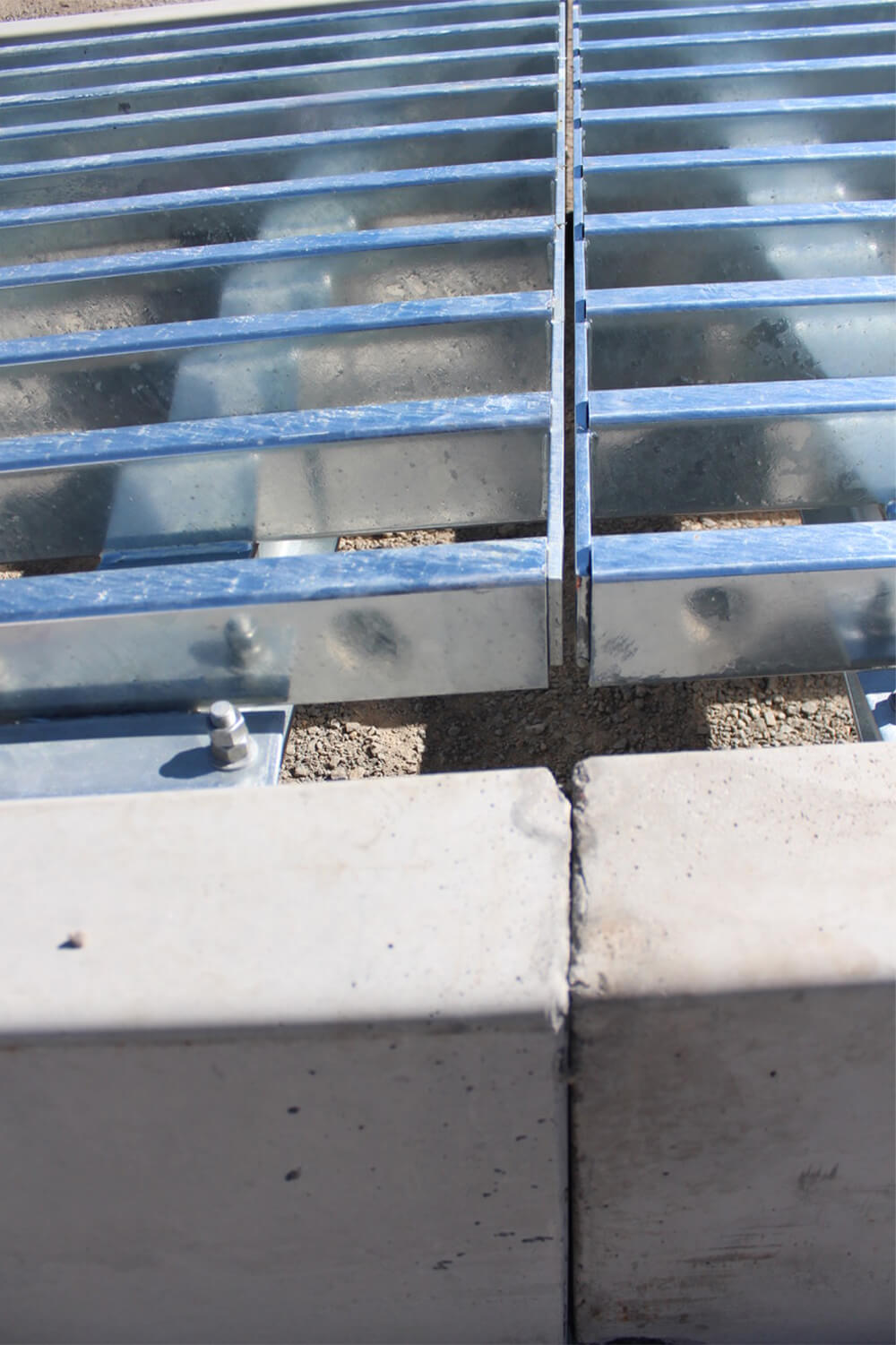Everything you need to know to get your Grid assembled
On this page you will find simple installation and placement guides for our range of grids, as well as frequently asked questions by our customer or prospective buyers.
Gridrite would advise that you check with a civil engineer for any specific install requirements as this is a guide only.
- Moving the grid pieces can be done by the use of a crane and swift lifts or a compatible forklift.
- Make sure you have a firm compacted level pad to place the grid down to, if the site is soft install a min 300mm thick pad to a 150kpa compaction.
- Mark out the footprint of the grid and place the concrete abutments into place checking that the base has full contact with the prepared pad
- Remove any tie-down plates form the concrete abutments and lower in the steel section of the grid
- Install tie-down plates as per the factory positions and tighten all bolts.
- Dependent on install type build ramps to the top of the grid or backfill and compact
if you are still unsure how to assemble your new Gridrite grid or have any further questions, please feel free to contact us with your query, and one of our friendly staff will answer your question/s as soon as possible.
We offer three different placement options for our grids:

DUG IN GRID

HALF DUG IN GRID

RAMP GRID
FAQS
What is a Cattle Grid (Stock Grid)?
A cattle Grid is to prevent livestock using roads as a means of crossing at a fence line or physical property boundary. Our grids are built to allow any vehicles traversing in and out of property boundaries without having to open and close gates. Cattle grids are built of steel & concrete & designed to daily vehicle usage and types.
What is an Abutment?
The abutment is the concrete section that the steel grid bolts down to. The abutments come in pairs on our open-ended grid range and our enclosed base range is only 1 as it states. Grids exceeding 6m will incorporate multiple pairs of abutments RG 8m grid = 2 pair of abutments.
What are Wings?
Click here to be taken to the optional extra’s page for details.
What are Headwalls?
Click here to be taken to the optional extra’s page for details.
What is minimum load weight on Gridrite Grids?
8 tons per single axle is the minimum weight which is the Maximum axle weight on all Government roads without a permit. Trucks can carry a max load of 42 tons and to calculate the axle load you simply divide by the number of axles. 42/6 = 7 Ton per axle the more axles the lighter the axle load.
What grid do I use on a shire / council road?
We recommend grids from the Government Grids as these have been engineered to Australian standards and meet Main Roads requirements for fabrication.
What is the difference between Rural Grids & Government Grids?
The biggest difference between this grid range is Engineering, Standards from the government have to be highly adhered to based on your state and local government requirements.
What is the SPAN?
The span of grids is the depth or crossing distance of the steel only.
How do I lift the grids around?
Gridrite grids come in multiple sections and all our Government range are fitted with REID Swift Lift Luggs to make moving your concrete sections safer. You can use a forklift or crane (recommended).

Fax us (07) 4121 5055


